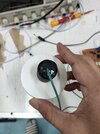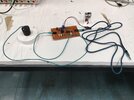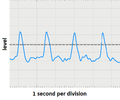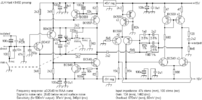I know all of that. That is not an answer to the question I asked.The Jfet inside an electret mic is an impedance converter with an input resistor to ground that is 1G ohms. Operating at about 0.4mA (0.5mA max) and with a low value drain resistor is voltage gain is not high. Its output level is about the same as a dynamic mic (coil and magnet). A preamp is still needed.
which was:
Are you stating that it is categorically impossible to preamplify the signal from a electret mic capsule without using two op amps and 12v?Can't you make some pretty good low-noise, low-gain amplifiers using j-fet(s)?
Are you stating that it is impossible to create a suitable low-noise, low gain preamp for an electret mic using a j-fet and 3V?
Because if you aren't saying either of the above, you are saying nothing useful.
No idea what that is, but I haven't seen/read it; so the put down attempt is lost on me."Learning about electronics"






